John Brown's Raid
Following the path of the infamous raid on Harpers Ferry.
The Raid
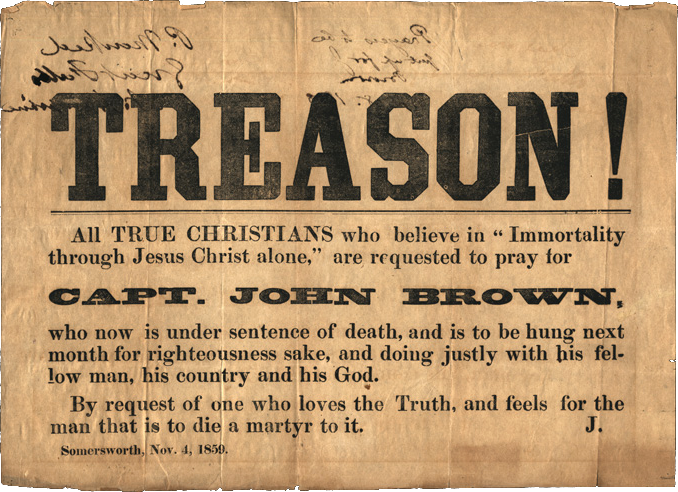
On October 16, 1859, John Brown led a party of 18 men into the small town of Harpers Ferry, Virginia. His plan was to galvanize a major slave rebellion in the South by seizing the estimated 100,000 firearms in the federal arsenal, arming slaves in the surrounding area, and moving south along the Appalachian Mountains, gathering more slaves to his cause and creating an unstoppable force that would crumble the institution forever. To his detriment, Brown overestimated the support he would receive and underestimated the rancor of the local townspeople when their livelihood was threatened. Thirty-six hours later, the plan had failed, and Brown was captured.
The Aftermath
On November 2, 1859, John Brown was found guilty of treason against the Commonwealth of Virginia, five counts of murder, and inciting an insurrection among Virginia slaves. He was hanged on December 2, 1859 in Charles Town, just a few blocks from the jail and courthouse.
John Brown’s actions and death deepened the divide between the North and South, and he continues to be a controversial figure today. The North found a martyr, and a little more than a year later, Union troops marched south singing “John Brown’s Body.” Contemporary luminaries Ralph Waldo Emerson, Henry David Thoreau, Herman Melville, and Walt Whitman praised the man and his cause. Meanwhile, anger and fear stirred in the South. Feeling it was under attack, the South began building up its militias, paving the way for secession and war.
On May 30, 1881, at the fourteenth anniversary of the founding of Storer College in Harpers Ferry, Frederick Douglass delivered a famous speech on the subject of John Brown, whom he had known. He concluded by saying, “If John Brown did not end the war that ended slavery, he did at least begin the war that ended slavery. If we look over the dates, places and men for which this honor is claimed, we shall find that not Carolina, but Virginia, not Fort Sumter, but Harpers Ferry, and the arsenal, not Col. Anderson, but John Brown, began the war that ended American slavery and made this a free Republic.”
This tour follows the path of John Brown’s Raid from start to finish. Travelers will start at the Kennedy Farmhouse, where Brown and his men stayed in the weeks preceding the attack on Harpers Ferry, and finish at the museum housing the cart that carried John Brown to his execution. The tour will require some moderate walking and admission to various historical sites. Take the path of John Brown and his men as they changed the course of American history and sparked the American Civil War.
Tour starting point: Kennedy Farm, Sharpsburg, Maryland
Start at the Kennedy Farm, a Maryland State Historic Site, 2406 Chestnut Grove Rd, Sharpsburg, MD 21782
Stop 1 – The Kennedy Farm
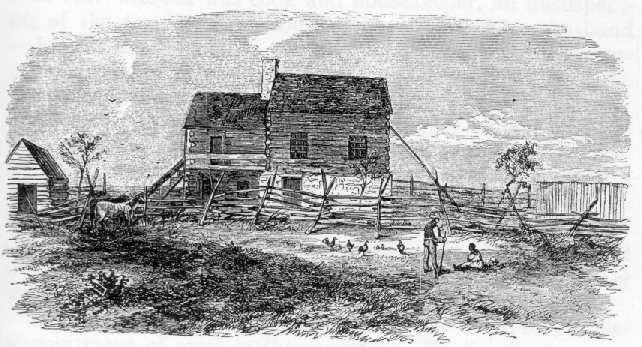
John Brown (as “Isaac Smith”) rented this farm, now a National Historic Landmark, from a trustee of the Kennedy estate for $35 in gold for 9 months. From July until the October raid, Brown gathered and trained his Provisional Army, just 4 miles north of Harpers Ferry. At the time of the raid, there were 21 men there, not including Brown: 16 white men (including 3 of Brown’s sons) and 5 black men. Eighteen of these men marched to Harpers Ferry. After the raid, documents found at the farm, including a provisional constitution, were used against Brown in court. The farmhouse has been restored to its 1859 appearance and is open for tours by appointment.
Following the tour: Head southwest on Chestnut Grove Road, go 0.5 miles. Take a slight left onto Harpers Ferry Road, go 4 miles. Harpers Ferry Road turns slightly left and becomes Sandy Hook Road, go 1.5 miles. Turn left onto Keep Tryst Road, go 0.2 miles. Turn right onto Valley Road, going roughly 250 feet. From there turn left at the 1st cross street onto US-340 South, go 7 miles. Turn right onto Old Country Club Road, go 0.5 miles. Turn right onto Beallair Manor Drive and go 0.5 miles. The next stop, Beall-Air will be on your right.
Stop 2 – Beall-Air
Lewis William Washington, the owner of Beall-Air and great-grandnephew of George Washington, inherited several relics of particular interest to John Brown, including a sword from Frederick the Great and a pair of pistols from Lafayette. John Cook, who served as John Brown’s advance party at Harpers Ferry, befriended Lewis Washington and noted the relics, as well as the slave population at the plantation. During Brown’s raid on Harpers Ferry, a detachment from his force led by Cook seized the sword and pistols, along with Mr. Washington and three of his slaves. The hostages were taken to Harpers Ferry by way of Allstadt House and Ordinary, where more hostages were taken. All survived their captivity, and Washington identified Brown to the Marine rescue party and served as witness for the prosecution at his trial. The home is not open to visitors at this time.
Following the tour: Head south on Beallair Manor Drive toward Old Country Club Road, go 0.5 miles. Turn left onto Old Country Club Road, go 0.7 miles. Turn left onto US-340 North, go 2.5 miles. Turn right onto Millville Road, go 0.3 miles. Take a left onto Alstadt’s Hill Road, go 0.3 miles. The next stop, Allstadt’s House & Ordinary, will be on your left.
Stop 3 – Allstadt’s Ordinary
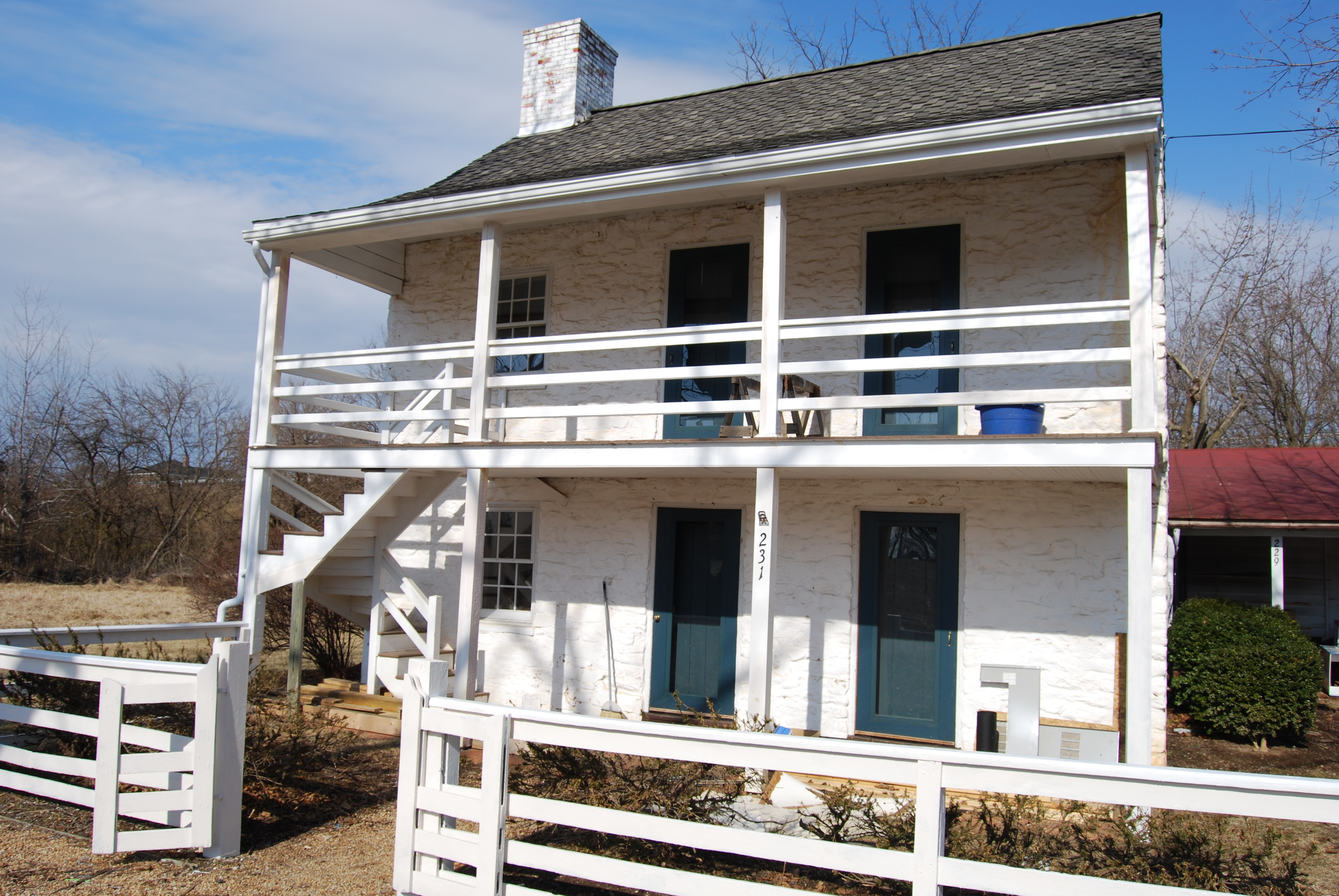
Cook stopped at the Allstadt home as he returned to Harpers Ferry and took nine more hostages: John Allstadt, his 18-year-old son, John Thomas, and seven of their slaves. Allstadt operated an ordinary (or tavern) on the site as well as a tollgate on the Harpers Ferry-Charles Town Turnpike. The property remained in the Allstadt family until the 1923 death of John Thomas Allstadt, the last survivor of the raid. Restoration work has been done to return the property to its 1859 appearance. There are interpretive signs at the site, but it is not yet open to the public.
Following the tour: Return southwest on Alstadts Hill Road toward Reveille Road, go 0.2 miles. Turn right onto Millville Road, go 0.3 miles. Turn right onto US-340 North, go 0.9 miles. Turn right onto Shoreline Drive, going 0.1 miles. Entering into Harpers Ferry National Historical Park. Admission to the Park is $10. From there, drive, shuttle or hike down to the Park’s lower town. The next stop, John Brown’s Fort, is roughly located at 814 Shenandoah Street, Harpers Ferry.
Stop 4 – Besieged and Captured
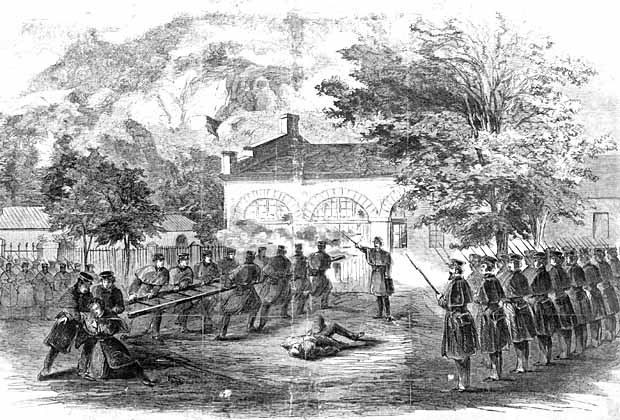
The raid was initially successful—Brown met little resistance in the town, immediately slashed the telegraph wires, and detained a B&O train passing through. The first casualty of the raid was Heyward Shepherd, a free black man and railroad employee. For unclear reasons, Brown later allowed the train to proceed, and the conductor raised the alarm down the line. The support Brown expected from the local slave population never came. The next day, local militia and townspeople surrounded the arsenal, and President Buchanan ordered a company of Marines under Col. Robert E. Lee to march on Harpers Ferry. Brown, realizing he was trapped, took nine of his hostages and moved into the engine house, now known as John Brown’s Fort. On the 18th, Lee sent Lt. J.E.B. Stuart to negotiate a surrender, but Brown refused. The Marines battered down the doors of the engine house, and in 3 minutes the raid was over. Brown was captured, as well as 6 other raiders who were all eventually hanged. A total of 17 people died during the raid: 10 of Brown’s raiders, 2 slaves, 1 Marine, and 4 townspeople, including the mayor.
Following the tour: Exit the Park southeast on Shoreline Drive, headed back toward US-340, go 0.1 mile to the stop light. Turn left onto US-340 South, go 6 miles into Charles Town, West Virginia. The next stop on the tour, site of the Old Charles Town Jail and current US Post Office will be on your left. Street Parking is available.
Stop 5 – Jailed
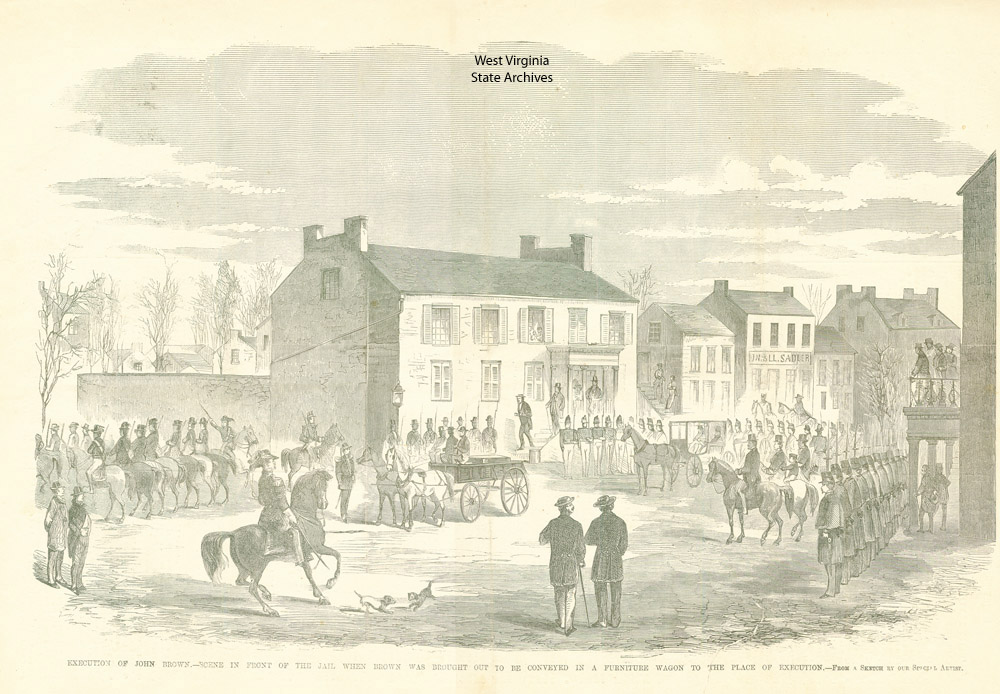
The old Charles Town jail was torn down in 1919. It sat diagonally across from the courthouse, where the post office now sits. Brown was beaten by Lt. Israel Green during his capture and requested a delay for his trial due to injury, which was not granted. He received medical attention while in jail and was carried to court on a stretcher. He refused rescue attempts and spent his time furthering the cause of abolition through letter-writing and interviews with journalists. While incarcerated he also developed a friendship with his jailer, John Avis.
Following the tour: Directly adjacent to the Post Office location is the Jefferson County Courthouse, where John Brown was tried. You may enter into the Courthouse during business hours to view part of the courtroom where the trial took place, starting on October 25, 1859.
Stop 6 – The Treason Trial in Charlestown

Despite the fact that the raid happened on federal land, Governor Henry Wise ordered that the men be tried in Virginia. The trial began on October 27, just 9 days after Brown’s capture, and ended with the sentence of hanging on November 2. Richard Parker was judge. The defense, which was provided by the state, called no witnesses, and Brown himself did not testify. Hiram Griswold delivered the defense’s closing remarks, arguing that Brown could not be found guilty of treason against a state of which he was not a resident, that he had not personally killed anyone, and that no slaves had rebelled. The jury deliberated for only 45 minutes before issuing a verdict of guilty. Before sentencing, Brown made the now famous statement, “Now, if it is deemed necessary that I should forfeit my life for the furtherance of the ends of justice, and mingle my blood farther with the blood of my children and the blood of millions in this slave country whose rights are disregarded by wicked, cruel, and unjust enactments, I say let it be done.” The Charles Town courthouse was severely damaged during the Civil War. It was renovated and enlarged after the war and is open to the public.
Following the tour: From the Courthouse entrance, head northeast on East Washington Street, toward North Samuel Street, walking roughly 300 feet. Turn right onto the first cross street onto South Samuel Street, go 0.3 miles. The final stop on the tour, John Brown’s hanging site will be on your left.
Stop 7 – “I John Brown…”
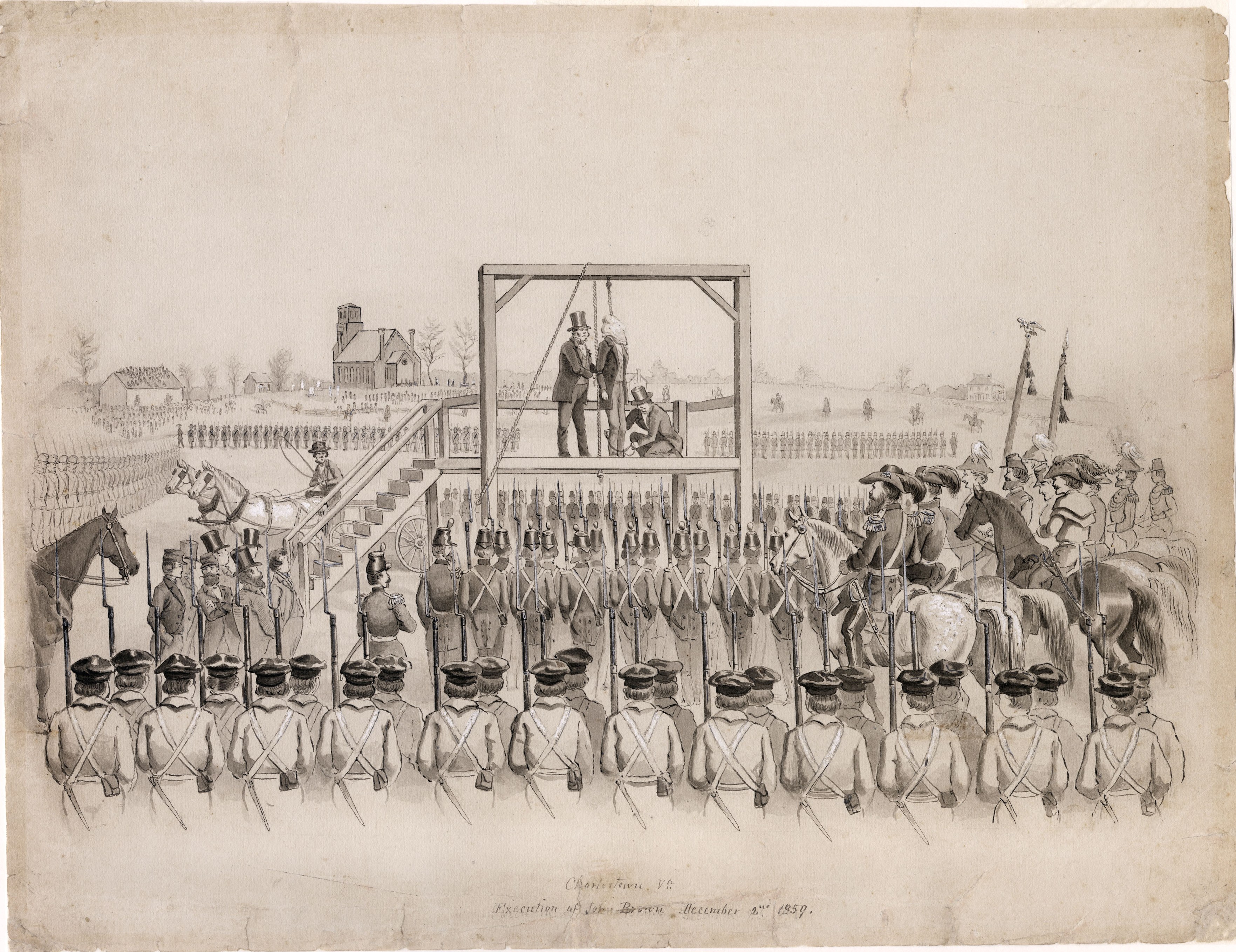
John Brown was hanged on December 2, 1859, shortly before noon, on what is now the lawn of the Gibson-Todd House. Both John Wilkes Booth and Thomas Jackson (later known as “Stonewall”) were present among the 2,000 Virginia militia at the execution. A note written by Brown read: “Charlestown, Va. 2nd December, 1859. I John Brown am now quite certain that the crimes of this guilty land: will never be purged away; but with Blood. I had as I now think: vainly flattered myself that without very much bloodshed; it might be done.” John Thomas Gibson, county commander of the Virginia Militia and the first to respond at Harpers Ferry, built an imposing Victorian home on the site in 1891. In recognition of his services, Gibson received an original copy of Brown’s provisional constitution as well as the desk on which Brown’s death warrant was signed. A marker for the hanging site was built of stones from the demolished jailhouse. The Gibson-Todd home is a private residence.
Stop 8 – Jefferson County Museum

The wagon that carried John Brown to his execution, along with other materials associated with the raid, including the desk of Brown’s jailer, John Avis, are on display at the Jefferson County Museum. The museum also houses a vast collection of Civil War relics, as well as many other artifacts related to the rich history of Jefferson County, West Virginia. The fee is $3, and the museum is open from 11am to 4pm, March through December.
End of tour.
Click here to download a PDF copy of this tour!
The tour was produced in a partnership between the Jefferson County Convention and Visitors Bureau and the Jefferson County Historic Landmarks Commission. Referenced materials for this tour came from Harpers Ferry National Historical Park, the Jefferson County Museum and the West Virginia GeoExplorer Project.